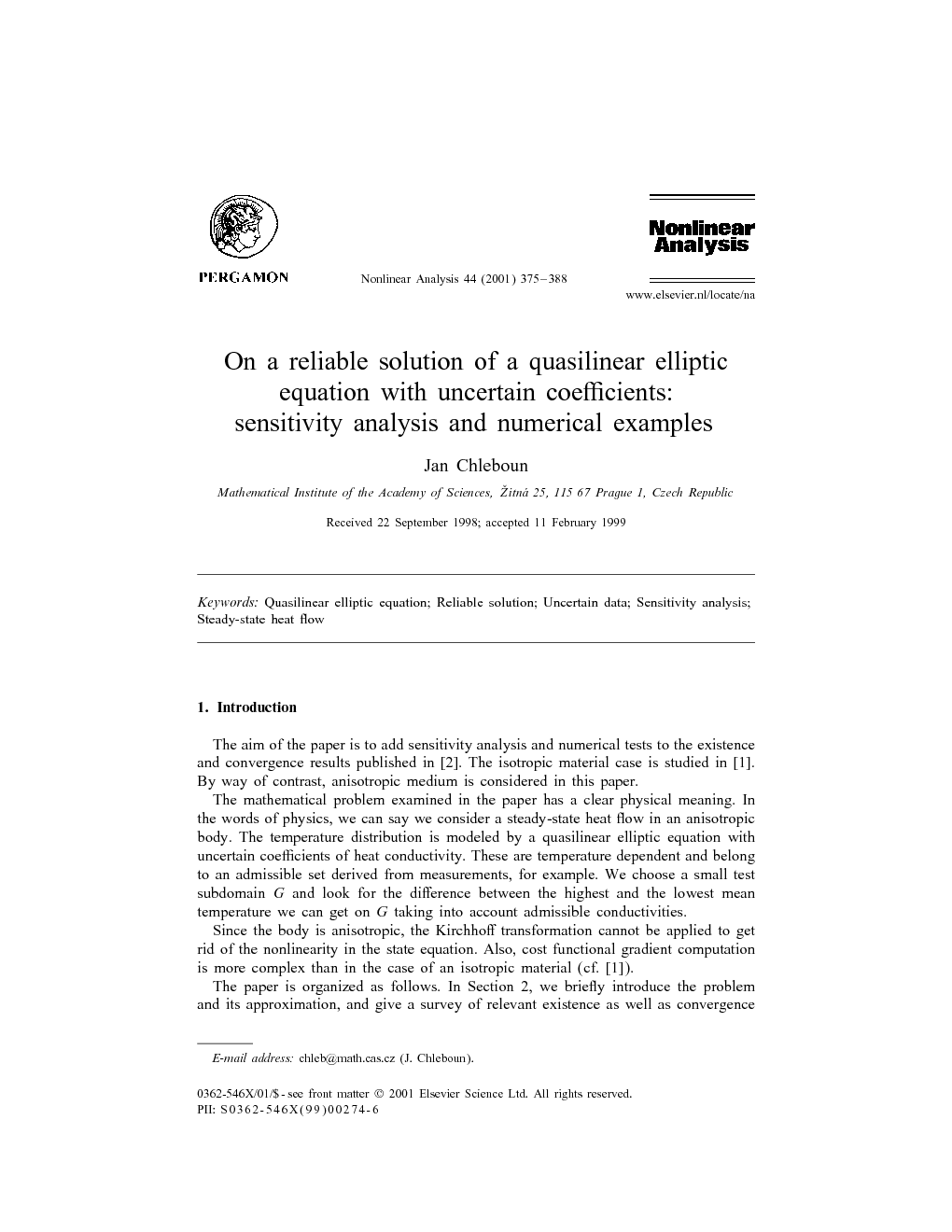ترجمه فارسی عنوان مقاله
در یک راه حل قابل اعتماد از یک معادله بیضی شبه خطی با ضرایب نامشخص: تجزیه و تحلیل حساسیت و نمونه های عددی
عنوان انگلیسی
On a reliable solution of a quasilinear elliptic equation with uncertain coefficients: sensitivity analysis and numerical examples
| کد مقاله | سال انتشار | تعداد صفحات مقاله انگلیسی |
|---|---|---|
| 25554 | 2001 | 14 صفحه PDF |
منبع

Publisher : Elsevier - Science Direct (الزویر - ساینس دایرکت)
Journal : Nonlinear Analysis: Theory, Methods & Applications, Volume 44, Issue 3, April 2001, Pages 375–388
ترجمه کلمات کلیدی
معادله بیضی نیمه خطی -
راه حل قابل اعتماد -
داده های غیر قطعی -
تجزیه و تحلیل حساسیت -
جریان گرما حالت پایدار -
کلمات کلیدی انگلیسی
Quasilinear elliptic equation,
Reliable solution,
Uncertain data,
Sensitivity analysis,
Steady-state heat flow,

